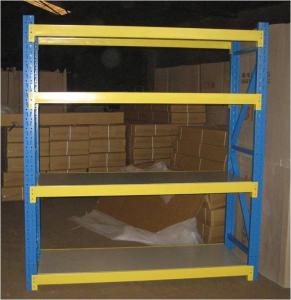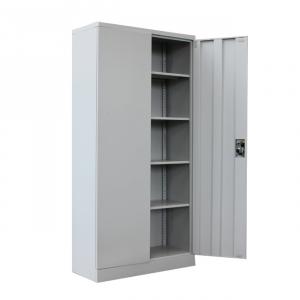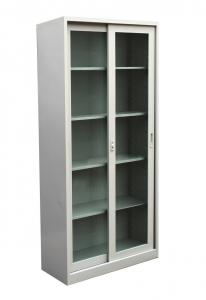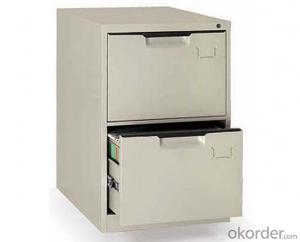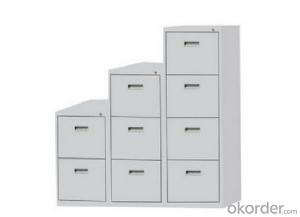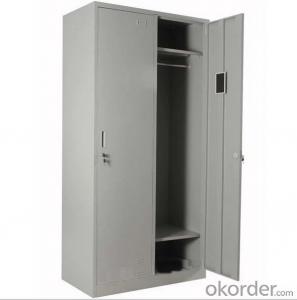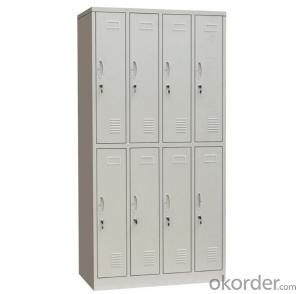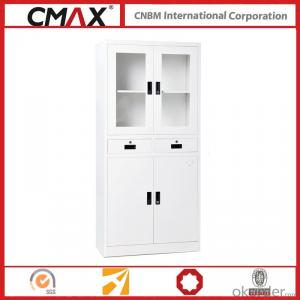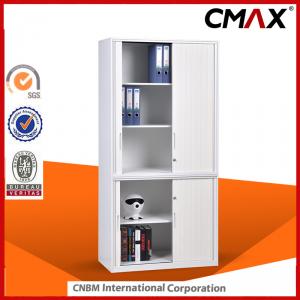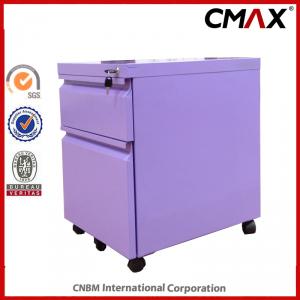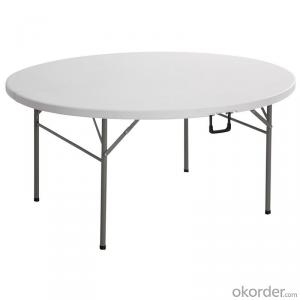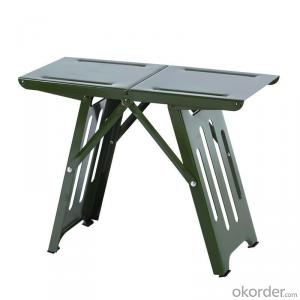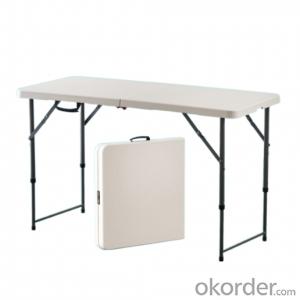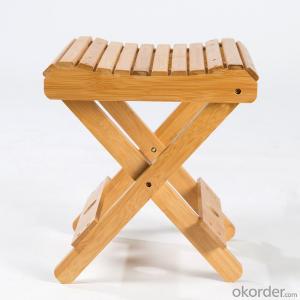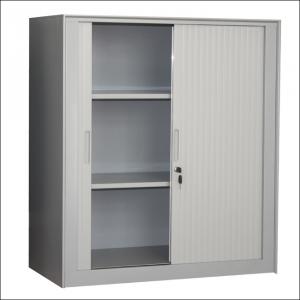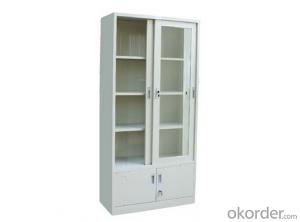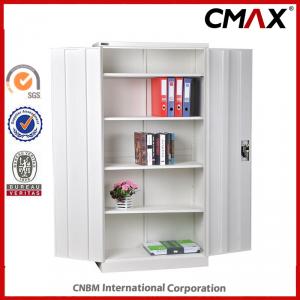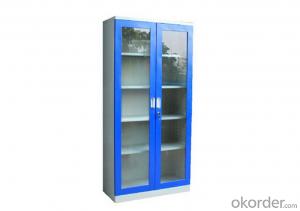Half Height Steel Swing Door File Cabinet Cupboard
- Loading Port:
- Qingdao
- Payment Terms:
- TT OR LC
- Min Order Qty:
- 60 set
- Supply Capability:
- 2500 set/month
OKorder Service Pledge
OKorder Financial Service
You Might Also Like
Item specifice
Half Height Steel Swing Door File Cupboard
Product Details
Half Height Steel Swing Door File Cupboard are constructed of cold rolled steel, are available in 900mm heights,450mm depth, 900mm width, The surface is static powder painting, in gray, beige or blue finish.
Products Description:
Item No.: | CMAX-OSR-RT-L-BBF | ||
Products name: | Steel swing door file cabinet | ||
Size | 900*900*450mm | ||
Material | High quality cold rolled steel or customized | ||
Gross weight | 32 +/- 0.5kg or customized | ||
Thickness | 0.7mm before painting or customized (0.5mm~0.9mm are available) | ||
Packing details | Packing volume: 0.139cbm/pcs | ||
in multi-layer carton box with polyfoam inner. | |||
Surface | Environmental electrostatic powder coating | ||
Color | Various colors are available according to the RAL or Panton chart | ||
Accessories | Handles and locks can be customized | ||
Max loading quatity(Pcs) | 20GP | 40HQ | |
300pcs | 450pcs | ||
Available Accessories:
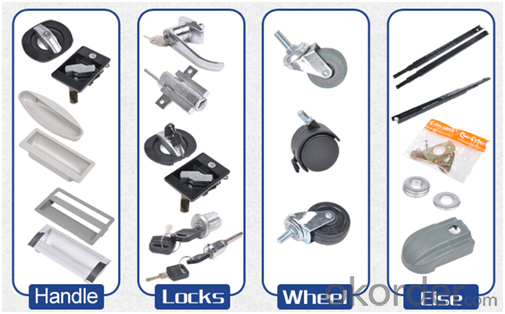

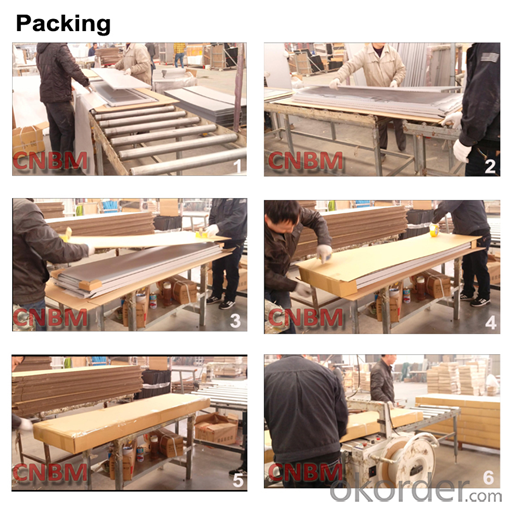
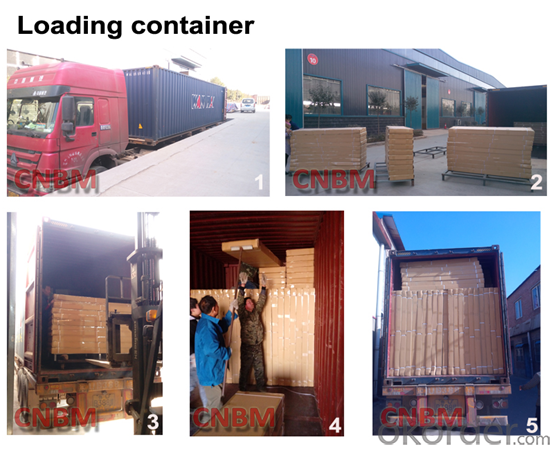
FAQ
Q1: What’s the thickness of your steel plate?
We can offer 0.4mm-1.2mm or even thicker steel plates; It also could be produced by mixed different customized thickness according to the customer’s cost and quality request.
Q2: What's the package?
Our lockers and cabinets are knock-down structure designed to save transport cost, which will be protected firstly by polyester film and then packed by multi-layer cardboards bond with nylon strips.
Q3: How is your MOQ and Sample policy?
Our MOQ is 50 pieces and sample fee might be charged yet will be refunded when customers place their formal orders.
Q4: How do you ensure the quality of products are good?
CNBM has achieved its great success worldwide; we would say the brand itself is a key of quality. In past decades, we’ve been focusing on systemizing our quality standard and improving the performance of our equipments.
Q5: What's the payment term?
It depends on different situations, T/T, LC, DP, DA, OA are all common used ones within CNBM.
Q6: What's the delivery time?
Depending on your quantity, usually 15 days for 1*40HQ after deposit.
Q7: Where do you always export?
With CNBM’s Okorder platform and its credit worldwide, our products are delivered to Latin America, South Asia, Europe and Mid-east etc. major markets.
- Q:Can a steel file cabinet be used in a construction site or industrial setting?
- Yes, a steel file cabinet can be used in a construction site or industrial setting. Steel file cabinets are known for their durability and strength, making them suitable for environments that require heavy-duty storage solutions. They can effectively store important documents, blueprints, permits, and other paperwork, ensuring that they are safely organized and protected. Additionally, steel file cabinets are often designed with features such as locking mechanisms, which provide added security for sensitive and confidential materials.
- Q:Are steel file cabinets stackable horizontally?
- Horizontal stacking is not possible for steel file cabinets.
- Q:What are the benefits of using a steel file cabinet?
- Using a steel file cabinet offers several advantages: 1. Durability and Strength: Steel file cabinets are incredibly durable and robust, making them perfect for extended use. They can handle heavy loads and resist wear and tear, ensuring the protection of your important files and documents. 2. Enhanced Security: Steel file cabinets provide advanced security for your documents. Most models include a locking mechanism, offering a secure storage solution for sensitive and confidential information. This feature prevents unauthorized access and safeguards your files from theft or tampering. 3. Fire Resistance: Steel is a non-combustible material, which means steel file cabinets are highly resistant to fire damage. In the event of a fire, these cabinets can serve as a safe haven for your documents, minimizing the risk of loss or destruction. 4. Improved Organization: Steel file cabinets are designed with multiple drawers and compartments, allowing you to organize your files systematically. This easy accessibility enhances productivity and efficiency in the workplace, saving time and effort when searching for specific files. 5. Space Efficiency: Steel file cabinets come in various sizes and designs, enabling you to choose one that fits your space requirements. They are compact and can be accommodated in any office or home setting, maximizing the utilization of available space. 6. Aesthetic Appeal: Steel file cabinets are available in a range of colors and finishes, providing a sleek and professional appearance to your office or workspace. They can complement any interior decor, adding an elegant touch to the surroundings. 7. Easy Maintenance: Steel cabinets are relatively easy to clean and maintain. They resist stains, scratches, and moisture, making them ideal for long-term use. Regular cleaning with a damp cloth or mild cleaning agents will keep them in excellent condition. In conclusion, the numerous benefits of using a steel file cabinet, such as durability, security, fire resistance, improved organization, space efficiency, aesthetic appeal, and easy maintenance, make it an outstanding choice for individuals or organizations in need of a reliable and efficient storage solution for their important documents and files.
- Q:Can a steel file cabinet be used in a non-profit or charity organization?
- Yes, a steel file cabinet can definitely be used in a non-profit or charity organization. File cabinets are essential for keeping important documents, records, and files organized and easily accessible. Non-profit and charity organizations often deal with a significant amount of paperwork, including financial records, donor information, legal documents, and program documentation. A steel file cabinet provides a secure and durable storage solution for these important files, protecting them from damage or loss. Additionally, many steel file cabinets come with locks, ensuring the confidentiality and privacy of sensitive information. Therefore, a steel file cabinet is a practical and efficient choice for any non-profit or charity organization in need of proper document management.
- Q:What sizes are available for steel file cabinets?
- Different storage needs can be accommodated by steel file cabinets that come in various sizes. For example, there are letter-size cabinets, typically measuring 15 inches wide and 28 inches tall, and legal-size cabinets, usually measuring 18 inches wide and 52 inches tall. These standard sizes are specifically designed to hold letter-sized or legal-sized hanging file folders, respectively. In addition to these, larger file cabinets with multiple drawers are also available, ranging from 30 to 42 inches wide and 52 to 78 inches tall. These larger cabinets are suitable for offices or workplaces that deal with a higher volume of paperwork. It is important to note that the dimensions mentioned may vary depending on the manufacturer and model, so it is always advisable to check the specifications provided by the supplier or retailer for precise measurements.
- Q:Can a steel file cabinet be easily cleaned or maintained?
- A steel file cabinet is capable of being easily cleaned and maintained. Steel, being a robust and resilient material, has the ability to resist stains and dirt. To cleanse a steel file cabinet, one can conveniently employ a damp cloth or sponge along with mild soap or detergent. By delicately wiping the cabinet's surface, any dust, dirt, or fingerprints will be eliminated. In the case of stubborn stains, a non-abrasive or stainless steel cleaner can be utilized. It is imperative to refrain from using abrasive substances, harsh chemicals, or scouring pads as they have the potential to scratch or damage the steel surface. Furthermore, routine maintenance of the steel file cabinet entails inspecting and tightening any loose screws or handles, ensuring the smooth operation of the drawers, and scrutinizing for any indications of rust or corrosion. Upon noticing rust, a rust remover or a mixture of baking soda and water can be employed for its eradication. All in all, with adequate care and maintenance, a steel file cabinet can retain its excellent condition for an extensive period.
- Q:Can steel file cabinets be used in IT companies to store technical documentation?
- Yes, steel file cabinets can be used in IT companies to store technical documentation. Steel cabinets provide durability, security, and organization for important documents, making them suitable for storing technical documentation in an IT company.
- Q:What are the different file organization options available for steel file cabinets?
- There are several file organization options available for steel file cabinets, depending on the specific needs and preferences of the user. Here are some common options: 1. Vertical filing: This is the most traditional and widely used file organization option. It involves storing files vertically in drawers. The files are typically organized alphabetically or numerically, using folders or dividers. 2. Lateral filing: This option involves storing files horizontally in drawers that open from the side. Lateral files are often used when there is a need for easy access to documents and when larger files or documents need to be stored. They are organized similarly to vertical files, with folders or dividers separating different categories. 3. Hanging file folders: These are commonly used in both vertical and lateral filing systems. Hanging file folders have hooks that allow them to be suspended from the sides of a file drawer. They are ideal for organizing and categorizing files within a drawer and can be easily moved or rearranged as needed. 4. Color-coded filing: This option involves assigning specific colors to different categories or types of files. By using colored folders or labels, it becomes easier to visually identify and locate specific files. This method can be combined with either vertical or lateral filing systems. 5. Electronic filing: With the advancement of technology, many organizations are transitioning to electronic filing systems. This involves scanning and storing documents digitally, eliminating the need for physical file cabinets. Electronic filing offers easier accessibility, efficient search capabilities, and saves physical storage space. Overall, the choice of file organization option for a steel file cabinet depends on factors such as the volume and type of documents, accessibility requirements, and personal preferences of the user. It is important to consider the specific needs of the organization or individual when deciding on the most suitable file organization option.
- Q:What are the different locking mechanisms available for steel file cabinets?
- There are several different locking mechanisms available for steel file cabinets, each offering varying levels of security and convenience. Some of the most common locking mechanisms include: 1. Keyed Locks: This is the most traditional and widely used locking mechanism for file cabinets. It involves a standard lock and key system, where a key is inserted into the lock to secure and unlock the cabinet. Keyed locks are relatively simple, affordable, and provide a basic level of security. 2. Cam Locks: Cam locks are another popular option for file cabinets. They consist of a cylindrical lock mechanism that is operated by a key. When the key is turned, a metal cam is rotated, either extending or retracting a bolt that secures the cabinet. Cam locks are relatively secure and can be easily rekeyed if needed. 3. Digital Keypad Locks: These locks offer a more advanced level of security and convenience. Instead of using a key, they rely on a keypad where a user enters a unique code to unlock the cabinet. Digital keypad locks can be programmed with multiple user codes, allowing for easy access control and eliminating the need for keys. 4. Combination Locks: Combination locks are similar to digital keypad locks but require manual turning of a dial to enter a preset combination. They are mechanical in nature and do not rely on batteries or electricity. Combination locks are durable and can be an effective solution for file cabinet security. 5. Biometric Locks: Biometric locks utilize fingerprint recognition technology to provide a high level of security and convenience. Users need to register their fingerprints, and the lock will only unlock when a recognized fingerprint is scanned. Biometric locks offer quick and easy access without the need for keys or codes. 6. Central Locking System: Some file cabinets are designed with a central locking mechanism that allows multiple drawers to be secured simultaneously. This is particularly useful for cabinets with multiple drawers, as it eliminates the need to lock each drawer individually. Central locking systems are often combined with cam locks or digital keypad locks for enhanced security. When choosing a locking mechanism for a steel file cabinet, it is important to consider the level of security required, ease of use, and budget constraints. Each locking mechanism has its own advantages and disadvantages, so it is advisable to assess the specific needs and preferences before making a decision.
- Q:Are steel file cabinets designed to be mobile or stationary?
- Steel file cabinets are typically designed to be stationary rather than mobile. They are intended to provide secure and organized storage for important documents and files in an office or workplace setting. Steel file cabinets are usually heavy and sturdy, with a solid construction that allows them to remain in place and withstand the weight of multiple files. They often come with features such as locking mechanisms and anti-tip mechanisms to ensure stability and security. While there are some smaller and more lightweight file cabinets with wheels for easier mobility, the majority of steel file cabinets are designed to be stationary and provide a stable storage solution for important documents.
1. Manufacturer Overview |
|
|---|---|
| Location | |
| Year Established | |
| Annual Output Value | |
| Main Markets | |
| Company Certifications | |
2. Manufacturer Certificates |
|
|---|---|
| a) Certification Name | |
| Range | |
| Reference | |
| Validity Period | |
3. Manufacturer Capability |
|
|---|---|
| a)Trade Capacity | |
| Nearest Port | |
| Export Percentage | |
| No.of Employees in Trade Department | |
| Language Spoken: | |
| b)Factory Information | |
| Factory Size: | |
| No. of Production Lines | |
| Contract Manufacturing | |
| Product Price Range | |
Send your message to us
Half Height Steel Swing Door File Cabinet Cupboard
- Loading Port:
- Qingdao
- Payment Terms:
- TT OR LC
- Min Order Qty:
- 60 set
- Supply Capability:
- 2500 set/month
OKorder Service Pledge
OKorder Financial Service
Similar products
New products
Hot products
Related keywords




